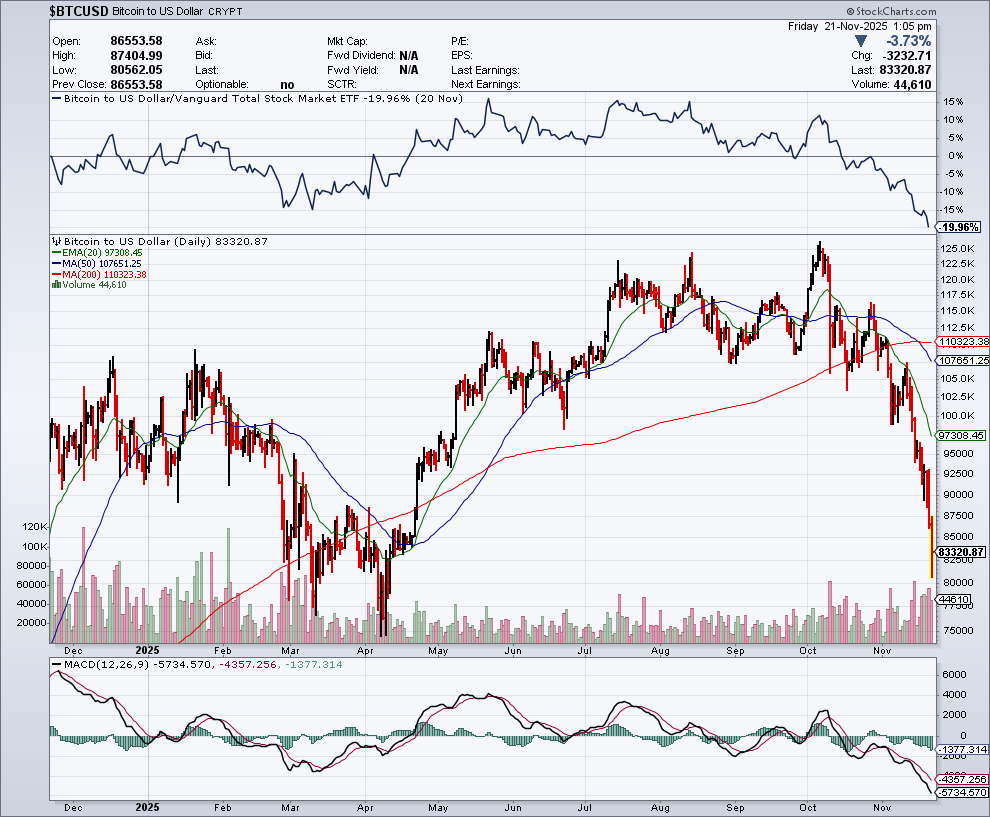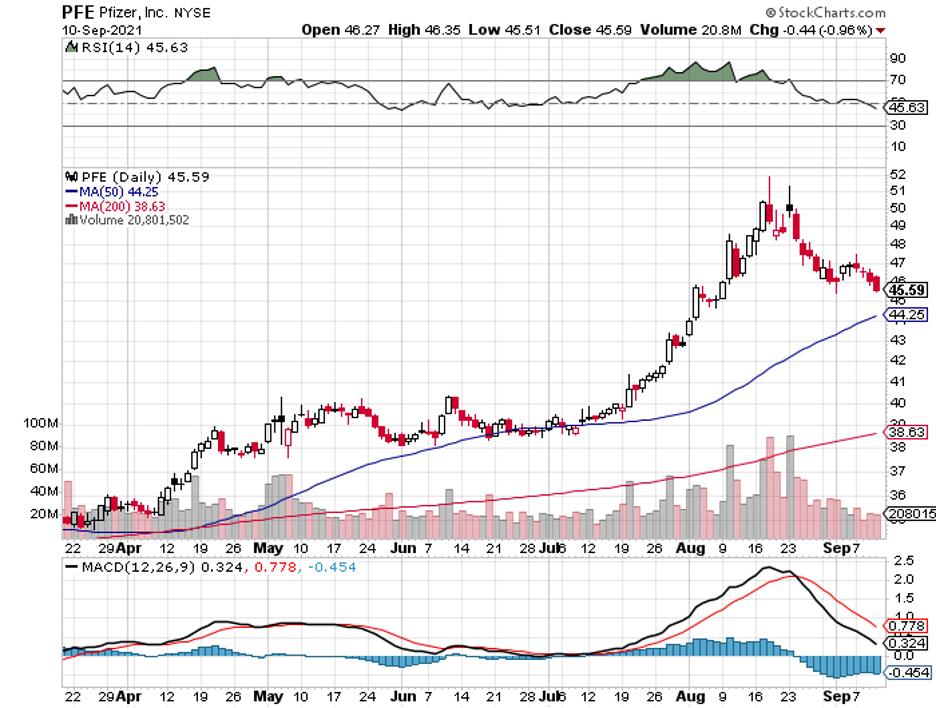When John identifies a strategic exit point, he will send you an alert with specific trade information as to what security to sell, when to sell it, and at what price. Most often, it will be to TAKE PROFITS, but, on rare occasions, it will be to exercise a STOP LOSS at a predetermined price to adhere to strict risk management discipline. Read more
When John identifies a strategic exit point, he will send you an alert with specific trade information as to what security to sell, when to sell it, and at what price. Most often, it will be to TAKE PROFITS, but, on rare occasions, it will be to exercise a STOP LOSS at a predetermined price to adhere to strict risk management discipline. Read more
Global Market Comments
September 17, 2021
Fiat Lux
Featured Trade:
(WHY TECHNICAL ANALYSIS IS A DISASTER)
(THE COOLEST TOMBSTONE CONTEST)
(SJB), (JNK), (HYG)
Mad Hedge Bitcoin Letter
September 16, 2021
Fiat Lux
Featured Trade:
(ONE OF AMERICA’S DIRTY LITTLE SECRETS)
(BTC)
Mad Hedge Biotech & Healthcare Letter
September 16, 2021
Fiat Lux
FEATURED TRADE:
(RIDING THE COVID-19 VACCINE MOMENTUM)
(PFE), (BNTX), (MRNA), (JNJ), (SNY), (GSK), (TRIL)
Crypto is still controversial - still this bizarre, unruly, too-big-to-explain thing that half the population dismisses as nonsense and the other half swears will hit six figures “any day now.”
You’d think after all these years the debate would cool off, but if anything it’s turned into a running commentary on the world young people walked into.
Remember when Millennials and Gen Z were mocked for complaining?
“Well of course the economy is screwed. Nobody wants to pay a decent salary, and nobody wants to work.”
Funny how that line hits differently when inflation actually shows up, interest rates rocket higher, and the cost of living goes from “annoying” to “how is this even allowed?”
But here we are. And if you believed the economy was compromised, then naturally something else had to fill the ideological gap.
Crypto stepped in, not just as a speculative lottery ticket, but as a middle finger to a system that politely thanked young people for their degrees and then handed them a lifetime of rent payments.
The roots of this frustration aren’t mysterious. The US spent decades outsourcing manufacturing, suppressing wages, and printing money like a kid discovering the family label maker.
That era of zero-percent interest rates and endless quantitative easing felt like a cheat code until 2022–2023 ripped it away. Suddenly money wasn’t free. Inflation wasn’t theoretical. The bill had arrived.
And then remote work blew the doors off the old labor map. Wage arbitrage used to be something corporations did. Now individuals do it, too.
People work from Bali, Buenos Aires, or Boise while competing with candidates from everywhere. Geography melted. Job markets stretched. And wages…stayed stubbornly unimpressive.
Meanwhile, the cost of living decided to cosplay as a space rocket. Housing affordability didn’t just get worse - it went full dystopian. Real wages moved an inch while prices sprinted a mile.
Even well-paid professionals found themselves barely clearing the month. The “just get a good job” advice aged about as well as a bowl of shrimp in the sun.
Put all that together and it’s no wonder younger adults turned to crypto. Was it partly hope? Yes. Was it partly desperation? Also yes. Was it also a little bit of “screw it, the system isn’t giving me anything anyway”? Absolutely.
Crypto became the alternative ideology because the old one - work hard, buy a home, retire someday - stopped functioning as advertised.
But here’s the twist: by 2025 that original crypto narrative has mutated into something completely different.
After the spectacular blowups of 2022 (we all remember them), crypto didn’t die. It matured.
Bitcoin ETFs launched in 2024. The IRS finally drew up rulebooks instead of threats. Global regulators settled on actual frameworks. Big banks stopped pretending crypto didn’t exist and quietly rolled out services like it was no big deal.
We went from “crypto is too wild to regulate” to “crypto is now part of my retirement account.”
In other words, the industry that was supposedly “too big to fail” is now simply part of the same financial system it once tried to disrupt. Not exactly the revolution the early evangelists dreamed of, but certainly more stable than the critics predicted.
And yet, underneath all the regulation, all the institutional adoption, all the shiny ETF commercials on cable news, something deeper remains. Young people still want ownership. Of something. Anything. A stake in a world that constantly feels like it’s slipping further out of reach.
Crypto didn’t fix that existential ache. It just became one of the few places where the door didn’t slam shut on them.
But reality check: if crypto does end up creating massive new wealth (again), it will still go mostly to the people who had disposable income to invest.
The vast majority living paycheck to paycheck aren’t buying Bitcoin; they’re buying dinner. Volatility is not a luxury they can afford.
And now they’ve got a new anxiety: AI. Automation. Entire job categories looking shakier than a meme coin on a Sunday night. Younger workers aren’t throwing rocks at the system; they’re just trying to stay afloat while the rules change every five minutes.
This is why crypto still feels like a real option in 2025. Not because it’s a secret to getting rich (that’s over) but because it’s one of the few places where younger generations can participate without asking permission from gatekeepers.
But let’s be clear: crypto is not a golden ticket. It’s not a lottery. It’s not the road to Lambo-land. It’s simply an asset that survived hype cycles, regulatory crackdowns, spectacular failures, and global uncertainty - and came out the other side as part of the mainstream.
We don’t need to overhype it. We don’t need to bury it. We just need to acknowledge what it actually is now: a tool. A legitimate piece of the financial puzzle. A place where the rules are finally written down. A sector driven not by chaos but by clarity.
Crypto isn’t a passport to extravagant dreams anymore. It’s a viable strategy in a world where traditional routes to stability have eroded.
And maybe that’s the point. Maybe what younger generations wanted all along wasn’t a revolution but a chance to belong to the economy they were promised.
Crypto didn’t give them that. But it did tell the truth about the world that made them look for it.
The pandemic is exhibiting hints of easing, and one of the names playing a critical role in the vaccine rollout that has made this step towards normalcy possible is Pfizer (PFE).
Actually, Pfizer stock has hit an all-time high courtesy of its COVID-19 vaccine, Comirnaty, which it developed with German biotech firm BioNTech (BNTX).
While this is undoubtedly an exciting time for the company, many investors wonder whether this period also marks the spectacular of Pfizer, and things will go downhill from here. After all, several of its patents are set to expire starting in 2025.
My short answer to this question is no. This isn’t the beginning of the end for Pfizer. Looking at the company’s history, pipeline, and trajectory, I can say that Pfizer’s rise is just getting started.
One of the key reasons behind my belief is Pfizer’s robust pipeline.
To date, the company has roughly 100 drugs queued for regulatory clearance, while others are slated for late-stage clinical testing.
That means that regardless of the patent expirations in Pfizer’s horizon, the company’s strong and diverse pipeline can easily counteract the blow from the loss of exclusivity.
Just last month, Pfizer received full approval from the US FDA for Comirnaty.
Since fellow vaccine developers like Moderna (MRNA) have yet to achieve the same, this makes Pfizer the first COVID-19 vaccine to gain this endorsement from the regulatory committee.
Needless to say, Pfizer could capitalize on this massive opportunity to boost its profits in the quarters.
The availability of a fully approved COVID-19 vaccine could allow establishments to oblige mandatory vaccinations, which could obviously lead to higher demand for Comirnaty, as over 100 million Americans have yet to receive at least a single jab.
In the second quarter of 2021, the company reported $19 billion in revenue, indicating a 92% year-over-year climb thanks to the $7.8 billion raked in by its COVID-19 vaccine.
Pfizer now estimates Comirnaty revenue to reach roughly $33.5 billion, indicating an expected 2.1 billion doses to be delivered within the year.
Excluding Comirnaty’s sales, Pfizer’s revenue increased by 10%. This strong momentum led the company to raise its 2021 full-year guidance to somewhere between $78 and $80 billion.
Before Comirnaty, though, Pfizer had already been known as a prolific vaccine developer.
One of its prized creations is the pneumococcal vaccine Prevnar, which generated $2.52 billion in revenue in the first 6 months of 2021.
Meanwhile, its tick-borne encephalitis vaccine, marketed as TicoVac, gained FDA approval in July and could bring in roughly $1 billion per annum.
Riding this momentum, Pfizer has been busy developing another potential moneymaker in this segment in the form of its respiratory syncytial virus (RSV) vaccine candidate: RSVpreF.
And if the Phase 3 results for RSVpreF come anywhere near its Phase 2 trial, then Pfizer has another blockbuster in its hands.
This is because the RSV vaccine market is projected to grow to approximately $10 billion by 2030, and Pfizer’s candidate is targeting 72% of that population.
However, the RSV market will be a crowded space with the likes of Johnson & Johnson (JNJ), Sanofi (SNY), and GlaxoSmithKline (GSK) working to fill this unmet medical demand.
So, realistically, Pfizer’s RSVpreF has the potential to capture 20% market share, translating to $2.1 billion in annual revenue.
Apart from its vaccine-related efforts, Pfizer’s core businesses have been growing as well. Top contributors come from its oncology arm, specifically Eliquis and Ibrance.
Its recent acquisition of Trillium Therapeutics (TRIL) is anticipated to serve as a catalyst for Pfizer’s cancer segment in the next years as well.
Overall, Pfizer has a blockbuster drug pipeline and an impressively successful COVID-19 vaccine rollout. These provide the company with a long runway for solid and steady growth.
“Bitcoin is like anything else: it's worth what people are willing to pay for it.” – Said Hedge Fund Manager Stanley Druckenmiller
When John identifies a strategic exit point, he will send you an alert with specific trade information as to what security to sell, when to sell it, and at what price. Most often, it will be to TAKE PROFITS, but, on rare occasions, it will be to exercise a STOP LOSS at a predetermined price to adhere to strict risk management discipline. Read more
Global Market Comments
September 16, 2021
Fiat Lux
Featured Trade:
(TRADING FOR THE NON-TRADER),
(ROM), (UXI), (UCC), (UYG)
Legal Disclaimer
There is a very high degree of risk involved in trading. Past results are not indicative of future returns. MadHedgeFundTrader.com and all individuals affiliated with this site assume no responsibilities for your trading and investment results. The indicators, strategies, columns, articles and all other features are for educational purposes only and should not be construed as investment advice. Information for futures trading observations are obtained from sources believed to be reliable, but we do not warrant its completeness or accuracy, or warrant any results from the use of the information. Your use of the trading observations is entirely at your own risk and it is your sole responsibility to evaluate the accuracy, completeness and usefulness of the information. You must assess the risk of any trade with your broker and make your own independent decisions regarding any securities mentioned herein. Affiliates of MadHedgeFundTrader.com may have a position or effect transactions in the securities described herein (or options thereon) and/or otherwise employ trading strategies that may be consistent or inconsistent with the provided strategies.










